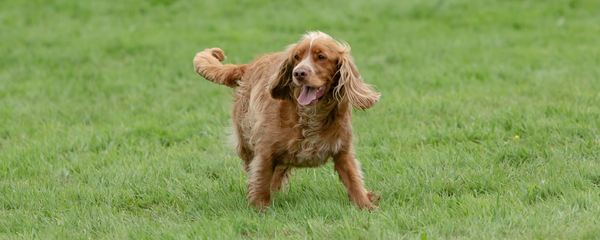The public's common assumption that a wagging tail signifies happiness represents one of the longest enduring misconceptions about canine behavior. Scientific studies show that dogs use their tails as advanced signals which transmit detailed information that goes far beyond basic happiness cues.1
Beyond the Happy Myth
The survey involving 1,000 participants demonstrated that happiness remained the default assumption about wagging tails among more than 50 percent of participants. The widespread misunderstanding about tail behavior results in confusion that can create hazardous circumstances since dogs may display tail wags while experiencing stress or showing aggression or anxiety.1
Tail wagging operates as a behavior system that presents itself through five elements which include direction and speed as well as amplitude and height and stiffness. The multiple parameters which signal emotional and social data transform the tail into an elaborate communication network instead of a basic indicator of happiness.2

The Science of Directional Wagging
Canine behavior research has shown that tail direction during wagging serves as an indicator of both brain lateralization patterns and emotional state of dogs. Dogs display separate patterns based on which brain hemisphere becomes more active:3
Right-sided wagging (when viewing the dog from behind) indicates positive emotional states. Positive stimuli together with familiar people and owners trigger this behavior in dogs. The right brain hemisphere controls the left side of the body and functions for approach behaviors and positive emotions.2
Left-sided wagging signals negative emotions or withdrawal tendencies. Dogs display this behavior when they face unfamiliar dominant dogs or experience threatening situations or display anxiety. The right brain hemisphere specializes in processing fear and aggression and withdrawal behaviors because it controls the left side of the body.2
The ability of other dogs to detect and understand directional variations stands as a remarkable phenomenon. Research indicates that dogs develop more stress-related behaviors while watching left-biased tail wagging instead of right-biased tail wagging.
The Evolution of Familiarity
A research breakthrough with computer vision technology showed that human exposure alters the tail wagging asymmetry patterns in dogs. The initial left-sided bias of beagles in their laboratory setting when interacting with unknown researchers changed to right-sided bias within a three-day period of exposure. The study demonstrated that left-wagging decreased from 42% to 22% as right-wagging increased from 9% to 25%.3
The discovery indicates that tail movements serve as immediate signs which reflect a dog's comfort level in social situations or human interactions.3
Tail Position Tells the Story
The position and elevation of your dog's tail serves as essential information to understand the true meaning of their wagging behavior.
High tail carriage (between 90° and 180°) often indicates confidence, alertness, or potential aggression. Stiff and fast wagging motions together with high tail carriage signal that the dog's arousal levels exceed friendly limits.
A dog holding its tail at the natural carriage height displays neutral or relaxed behavior. When the dog wags its tail at this height with loose movements it shows genuine contentment.
The dog presents itself in a submissive position through low tail carriage which reflects either fear or appeasement. A wagging tail does not change the fact that a dog remains uncomfortable or seeks to stay out of conflict when its tail is in a tucked or lowered position.
Speed and Amplitude Matter
Additional significance emerges from the motion characteristics of the wagging behavior.
Rapid, short wags typically result from high arousal together with tension. The dog experiences both excitement and potential stress or overstimulation during this behavior.
A dog uses full-body wag motions that extend from its rear end to express genuine happiness and relaxation. The complete body movement of a wag is linked to positive emotional responses.
The dog becomes alert while evaluating its surroundings through stiff, controlled wagging motions. During periods of uncertainty dogs typically display this type of wagging behavior to assess their environment and the intentions of others.
![]()
![]()

![]()
Individual Signatures and Patterns
Recent research which employed AI-powered motion tracking discovered that dogs develop personal tail-wagging styles similar to human gait patterns. The unique patterns which dogs use for identification through tail movements prove constant in various daily activities and circumstances.
Research shows that tail-wagging follows an "attractor-like dynamics" pattern between stable and transitional states. Dogs do not wag randomly because they use specific behavioral patterns that show advanced neural regulation of this movement.
The Communication Context
Dogs change their tail signal usage according to the type of listener they face. Studies indicate that dogs modify their tail wagging behavior during human observation compared to solitary situations. The observed change in behavior between alone and human-present conditions indicates that tail wagging operates as a communicative mechanism instead of emotional expression.
Studies have shown that denied food makes dogs increase their tail-wagging frequency in front of humans thus indicating tail wagging can serve as a communication signal for requesting attention. The research proves how dogs have developed advanced social understanding to recognize human attention patterns and communication signals.
Breed and Individual Differences
Every dog wags its tail in a unique manner. The frequency of tail wagging between hunting-type and shepherd-type dogs differs because domestication imposed different selection forces. Female dogs tend to demonstrate consistent tail-wagging behaviors compared to male dogs according to research yet each dog shows unique patterns.
Your dog may naturally display different tail positions because of breed characteristics so you need to understand both their baseline tail position and typical wagging behavior.
Practical Applications for Dog Owners
Understanding canine tail signals enables better human-canine relationships through preventing miscommunications:
- Pay attention to all visual cues instead of depending on tail wagging to determine your dog's emotions. You should analyze how your dog positions their ears along with their body language and facial expressions while considering the specific environment.
- A graphic representation of dog body language depicts various tail positions which correspond to happy, playful, anxious and aggressive emotions. A high, stiff tail combined with rapid wagging signals potential aggression and overstimulation especially when viewed with other tense body signals.
- Recognizing stress signals involves looking for both low tail carriage with slow wagging and left-biased tail movements which indicate your dog needs space or feels uncomfortable.
- Positive associations can be developed by using tail wagging patterns to your advantage when teaching your dog new people or environments.
The Evolutionary Perspective
The domestication process led to dogs developing better tail wagging abilities than their wild ancestor wolves did. The evolution of tail wagging can be explained by two competing theories which propose that this behavior either emerged as a natural consequence of selection for tameness or humans actively chose dogs whose tail movements were more rhythmic because humans respond better to rhythmic stimuli.
The evolutionary view explains why tail movements play a significant role in dog-human interactions while also explaining why we instinctively see meaningful signals in these movements.
Your dog's tail represents an advanced communication system which expresses both emotional states and social relationships together with personal characteristics. Understanding these faint signals correctly enables you to better comprehend what your dog feels so you can provide suitable responses to their needs and emotions.
Take a moment to observe your dog's tail wagging by watching both the movement itself and its direction speed height and environmental context. A deeper understanding between species will strengthen your bond while making you more effective at cross-species communication.








